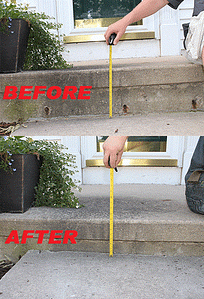Best Basement Waterproofing Fundamentals Explained
Best Basement Waterproofing Fundamentals Explained
Blog Article
Not known Factual Statements About Best Basement Waterproofing
Table of ContentsNot known Factual Statements About Best Basement Waterproofing How Best Basement Waterproofing can Save You Time, Stress, and Money.Best Basement Waterproofing - An OverviewBest Basement Waterproofing for DummiesFascination About Best Basement Waterproofing
uses excavation strategies toward the bottom of the structure's structure. entails eliminating dampness after it has gotten in the basement. AdvantaClean's trained specialists and technicians will certainly locate the water resource. If wall or piece splits exist, we will inject polyurethane and epoxies right into the cracks and secure the compromise, preventing additional moisture from getting in.
If there's condensation on the exterior of the aluminum foil, you have high humidity in your basement. Fix it with a portable room dehumidifier or a whole-house humidifier system as opposed to waterproofing products. If the foil has condensation on the inside surface (alongside the wall surface), the soil around your residence might be naturally damp from a high water table or inadequate soil water drainage.
You can waterproof just your interior walls, which might address the trouble. Once they dry, they adhere permanently to concrete and stonework walls.
10 Simple Techniques For Best Basement Waterproofing
Swirl the brush at the last of application to give the wall surface an eye-catching, completed appearance. Concrete waterproof finishes can't be put on formerly painted surfaces; inspect the label. A 5-gallon container costs regarding $60. Likewise called densifiers, they appropriate only for walls that have not been painted or secured.
Yet you comb, roll, or spray it on a lot more heavily one gallon covers just 75 square feet, not the 300 square feet normal with common paint. Water-proof paint is great for DIY application. You can use it over painted surfaces, and paint over it once it's treated (one gallon expenses $37).
It can cost $10,000 to $15,000, depending on the job required. Outside waterproofing involves excavating all over your home fully depth of the foundation wall surfaces, after that mounting a water resistant finish or membrane topped by drainage panels. The panels supply a simple path for water to move to an exterior French drain at the bottom of your structure.
A basement without waterproofing is kind of like that. Your cellar doesn't want to go through a rainstorm without correct security just as much as you do not desire to.
Some Ideas on Best Basement Waterproofing You Should Know
However if you've done your study, you would certainly understand there are two sorts of waterproofing: inside and outside. It can get perplexing what they both mean, which one's a better financial investment, and what will really maintain the water out. Do not fret, we put with each other this blog site to conveniently define both techniques for you and go over the pros and cons of each.
Outside waterproofing is a waterproofing approach that includes sealing your home from the this outside. The foundation wall surfaces are after that cleansed, secured, and covered with a waterproof membrane layer or sealer.

The Single Strategy To Use For Best Basement Waterproofing
It's a more involved procedure that needs digging up your lawn, which is costly and taxing. Outside waterproofing entails getting rid of whatever surrounding your house, including decks, driveways, sidewalks, landscaping, air conditioning devices, decks, and so on. If any of the work was done inaccurately and water is still entering your cellar, there isn't much you can do to deal with or fix it.
Interior cellar waterproofing includes waterproofing from the inside. Any type of water that leakages right into your basement is rerouted before it touches your floor. It's kind of like putting on a raincoat under your garments. It includes two things: a water drain track and a sump pump. It functions by securing the within your basement walls and floors so water that tries to go into is funnelled out via a sump pump.
It's a reliable approach to water resistant your cellar - Best Basement Waterproofing. The disadvantage of interior why not try this out basement waterproofing mostly relates to the installment procedure. This method requires kept things, furnishings, and integrated shelving or cupboards to be moved from touching the basement walls. And throughout installation, your basement can't be used. The most significant distinction between both techniques is this: Exterior waterproofing is a preventative option and interior waterproofing is a corrective solution.
The Main Principles Of Best Basement Waterproofing
Finally, outside and indoor cellar waterproofing are both reliable approaches of securing your home from water damage. Exterior waterproofing produces an obstacle that protects against water from entering your home, while indoor waterproofing redirects water that does enter your home. And it is essential to keep in mind that exterior waterproofing is a pricey and disruptive installment procedure when contrasted to indoor waterproofing.
Whichever technique you select, make pop over here certain you select a dependable and credible contractor for the task. If you have any kind of concerns about basement waterproofing, please reach out to us.
You can submit our kind below, start a conversation in the lower right-hand edge, or call us at 1-800-827-0702.
Report this page